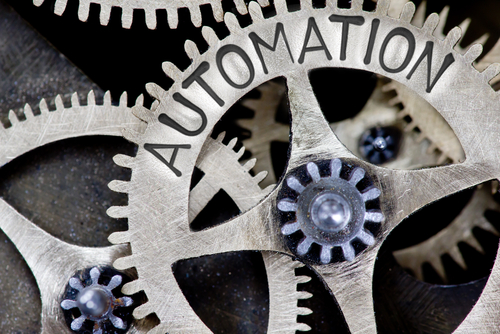Becoming financially free is a big money goal, no matter who you are and where you are in life.
Hitting those BIG financial goals means you need to dig a little (or a lot) deeper than just swapping a latte for making coffee at home or cutting the Netflix subscription.
Financial freedom can look a little different for everyone. Today I want to talk about the type of financial freedom that many people are striving for –
Having the ability to cover your (and your family’s) needs and expenses without having to work a job or be a slave to your business.
Achieving this kind of total financial independence is no small feat and like anything in life worth having, it will take some sacrifice.
How to work out your financially free number
Let’s say your cost of living per year is $50k.
To be totally financially free, your income from investments (or whatever passive income streams you choose) needs to hit 50k per annum.
Based on the standard ‘safe’ 4% withdrawal rate on a portfolio you’d need about $1.25 million invested to generate 50k per annum.
This means $1.25 million is your ‘financially free’ number.

How much do you need to sacrifice?
This depends on a few factors – what your financially free number is and how quickly you want to reach it.
The shorter the time frame, the more sacrifice you’ll need to make.
Based on the above 50k per annum target, let’s take a look at an example of 2 hypothetical paths. What type of sacrifices might you need to make along the way?
Path #1 – Reaching financial freedom by the usual retirement age
You’ll make some sacrifices – usually on bigger ticket decisions – over the long term.
This is the traditional route to financial freedom, hitting that goal of financial independence as you retire.
Let’s say you’re currently 30 years old and kicking off your mission to retire financially free at 65. You deposit $3,000 into an investment account to get started.
Add a deposit of $1500 each month for the next 35 years to your investment and based on the assumption of 4% annual return, you’ll retire with around $1,380,000 – a little over your financially free number.
These days many people are hitting retirement age with woefully insufficient retirement funds.
Even reaching financial freedom in retirement, despite the long time horizon, usually doesn’t happen without some sacrifice along the way.
Here are a few examples of lifestyle decisions you might make over the years to keep your saving and investing goals on track –
- Buying a smaller, older home – even though you could afford a more expensive property
- Choosing simpler, budget-friendly holidays more often than expensive trips overseas
- Buying a car second-hand / only having one family car
- Replacing an item only when it breaks – not just when a new upgrade is released
- Stick to a spending plan
- Spending time building a side income/business and sacrificing leisure time to do so
Path #2 – Financially free well before retirement age
You’ll need to make some pretty extreme lifestyle decisions over the short team. Focused on small and large cost savings.
Super early retirement is the goal of a growing community of people – particularly millennials – who are not interested in working a 9-5 until they reach 65 to retire. I get that too!

Their mission is to have the financial and time flexibility to do as they please well before their golden years. It’s been coined the FIRE movement (Financial Independence, Retire Early).
Depending on your income level. to reach financial freedom by 35 – 40 you’re going to need to spend at least 8 to 10 years hyper-focused (read – making a lot of sacrifices) to reach this goal.
Starting with a $3,000 deposit to an investing account, you’ll need to sock away $8,500 per month over a decade, receiving 4% return.
Start at 30 and by the time you’re 40, you’ll have hit your target of $1.25 million.
FIRE fans don’t just live within or a little below their means. They usually live on a tiny proportion of their income. This means making more extreme lifestyle decisions/sacrifices like –
- Ditching the car and catching public transport or biking everywhere
- Not eating out at expensive restaurants (ever) and cooking at home the majority of the time
- Cutting out weekends away and holidays – except for the camping kind
- Downsizing the family home
- Sticking to their spending plan with religious zeal
- Eliminating all unnecessary ‘stuff’ purchases. Many FIRE individuals live a life less complicated by consumerism
‘If you will live like no one else, later you can live like no one else.’ – Dave Ramsey
This route is hardcore and definitely not for everyone but FIRE fans believe the payoff of reaching financial freedom decades earlier is worth it.
Whatever camp you fall into – or somewhere in between – living within your means, using a spending plan and automating your finances can all help you reach your financially free goal faster.

You might also need to sacrifice the feeling of comfort and your leisure time to step out and do something new that may seem scary or overwhelming at first.
Like making your first investment, spending time learning about personal finance, taking a risk to start a new business venture, or investing in your education to increase your earning capacity.
Click here to claim your FREE Smart Investor Brainstorming Call
Conclusion
‘Financially free’ means something a little different for everyone, and so does sacrifice.
What might be an ‘I could NEVER….!!’ sacrifice for me, you might think nothing of going without!
This is why it’s so important to chart your own financial goals then focus on your progress and priorities – not get caught up in what everyone else is doing.
What sacrifices have you made along your journey to becoming financially free?
